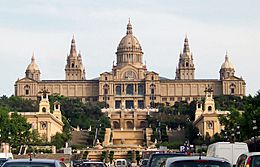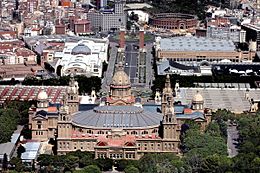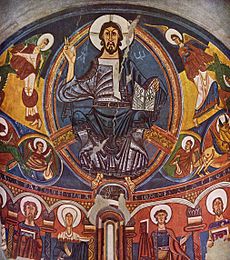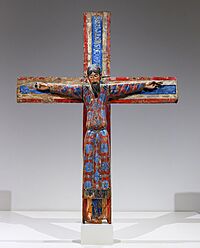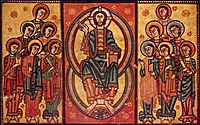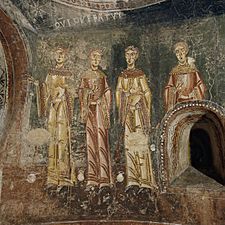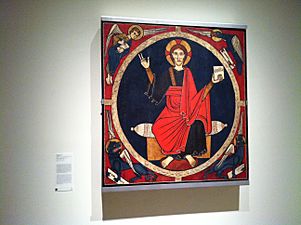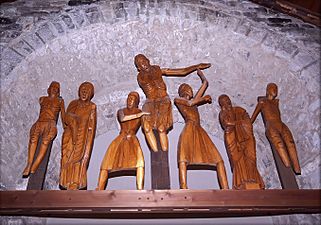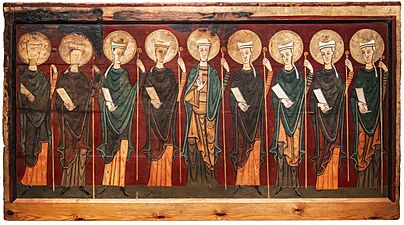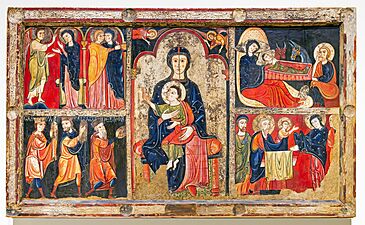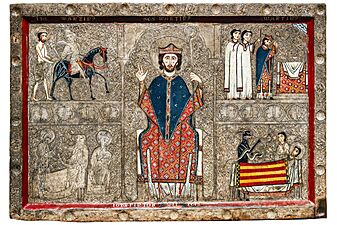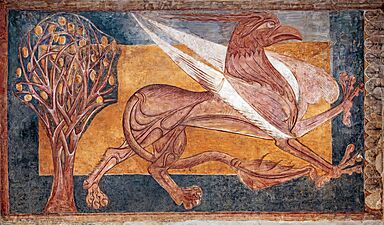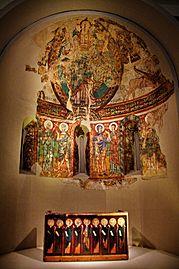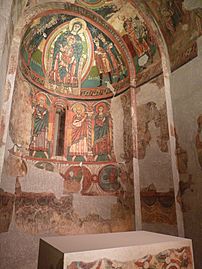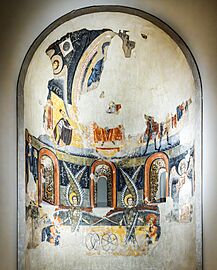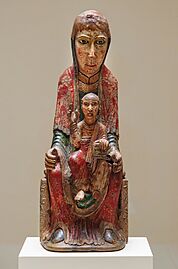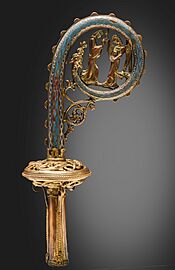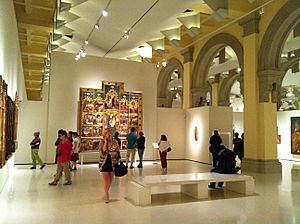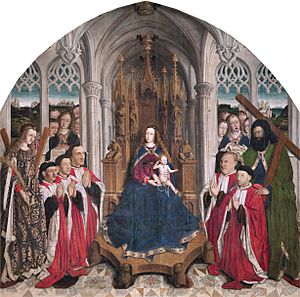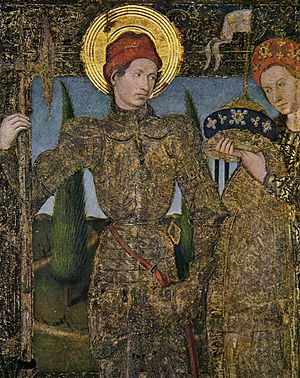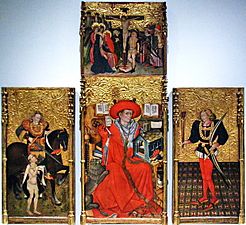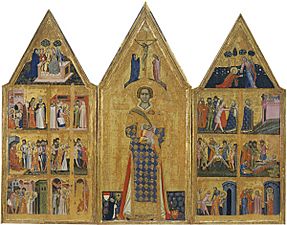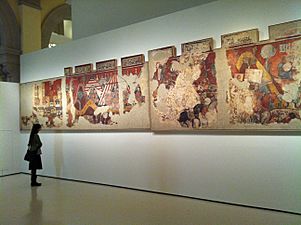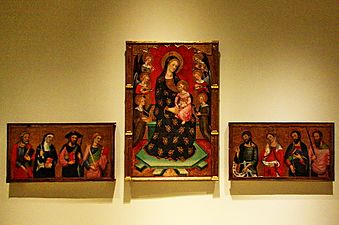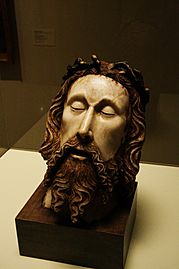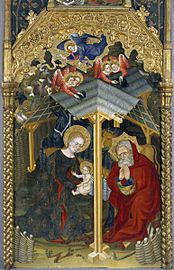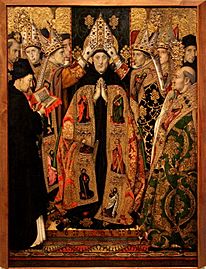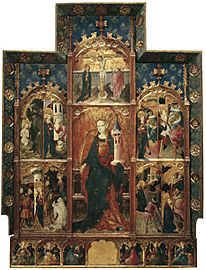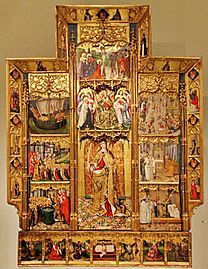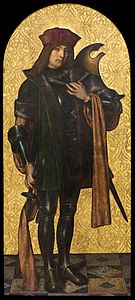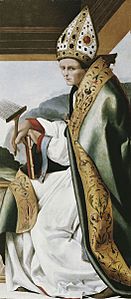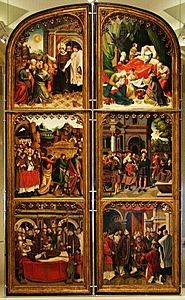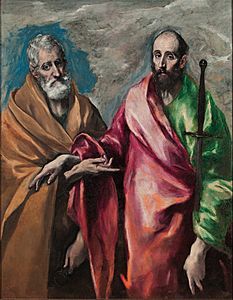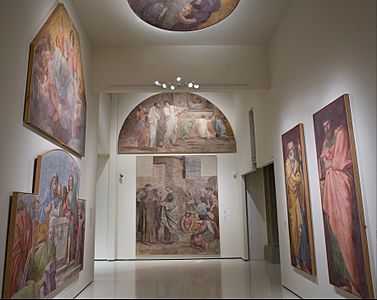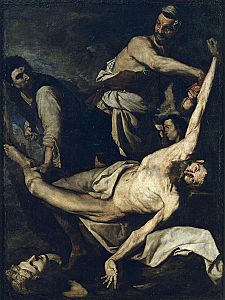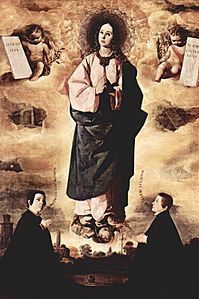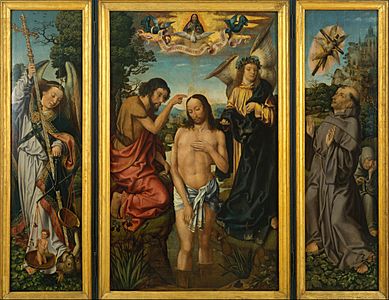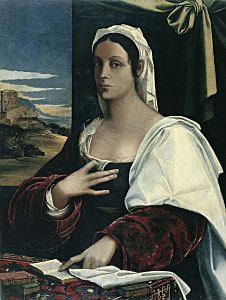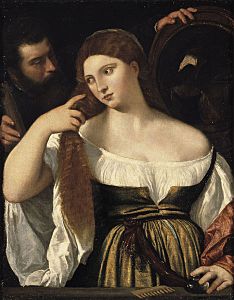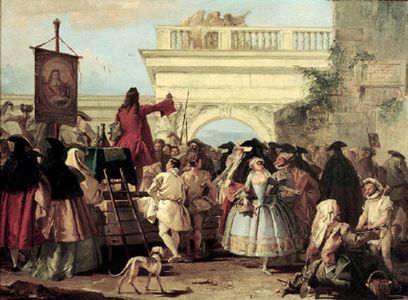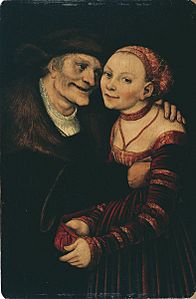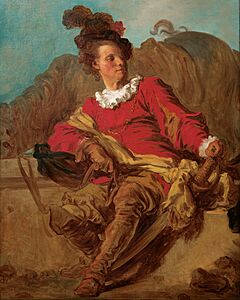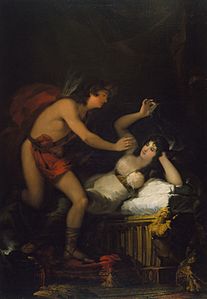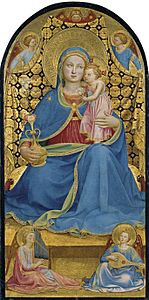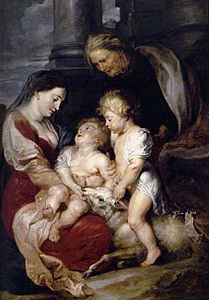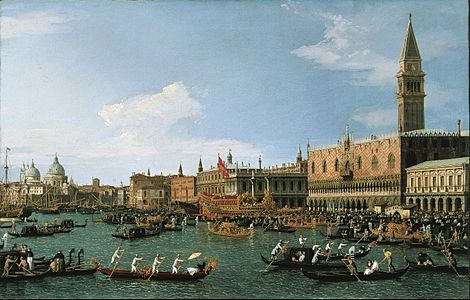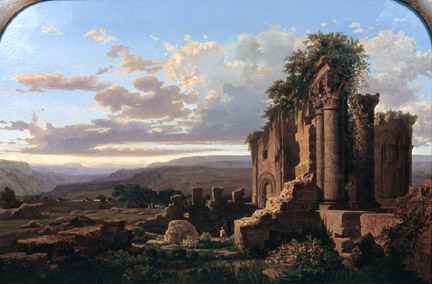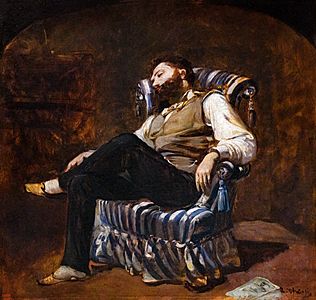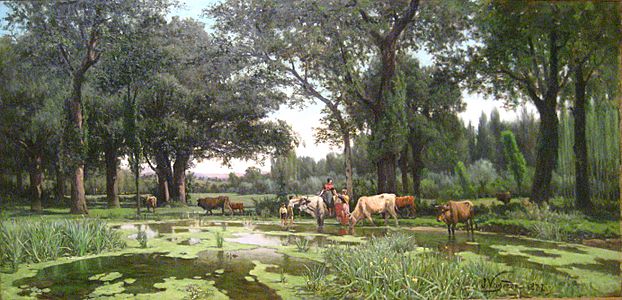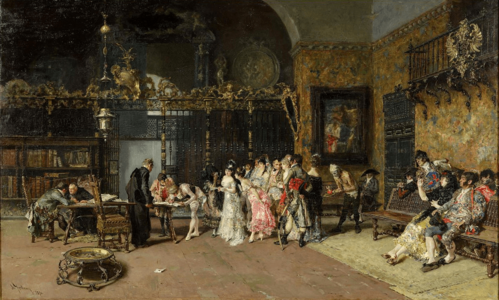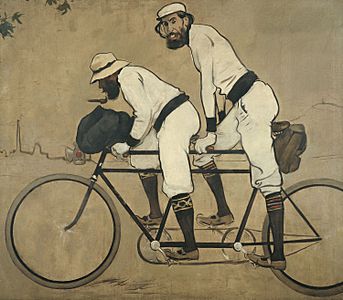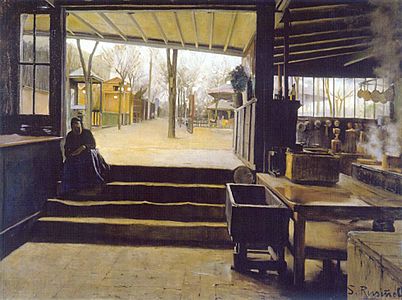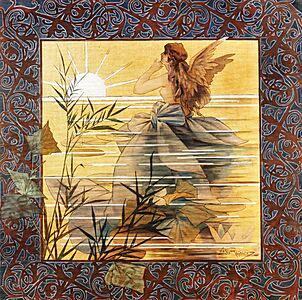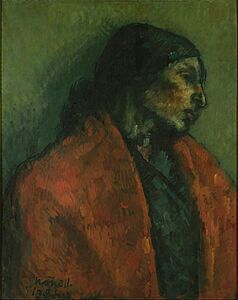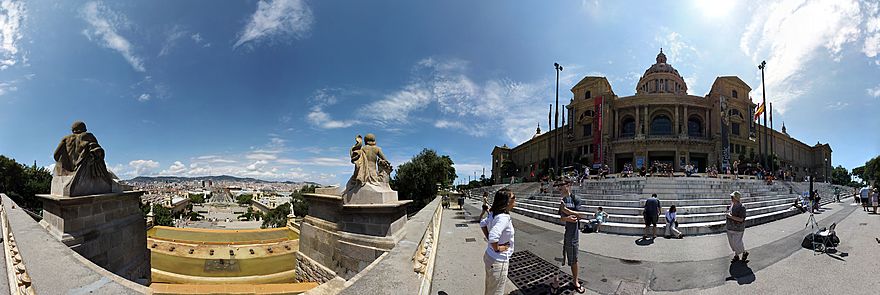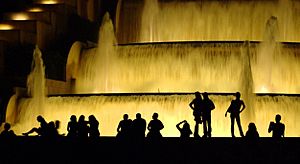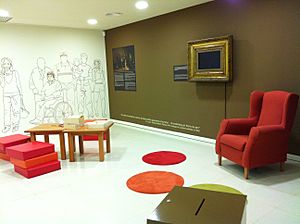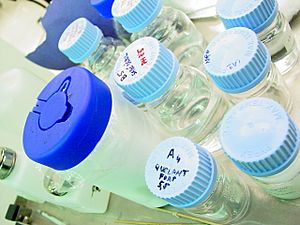Museu Nacional d'Art de Catalunya facts for kids
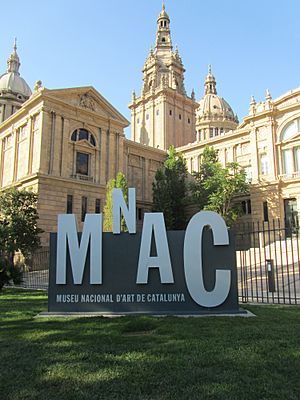
Museu Nacional d'Art de Catalunya
|
|
| Lua error in Module:Location_map at line 420: attempt to index field 'wikibase' (a nil value). | |
| Established | 1934 |
|---|---|
| Location | Palau Nacional, Barcelona |
| Type | Art museum |
| Collection size | 290,000 |
| Visitors | 828,713 (2010) |
| Nearest car park | On site (no charge) |
The Museu Nacional d'Art de Catalunya (which means "National Art Museum of Catalonia"), often called MNAC, is a large museum in Barcelona, Catalonia, Spain. It sits on Montjuïc hill, close to Pl Espanya. This museum is famous for its amazing collection of Romanesque church paintings. It also has a lot of Catalan art and design from the late 1800s and early 1900s, including modernisme and noucentisme styles.
The museum is inside the Palau Nacional, a huge building that looks like an Italian palace. It was built in 1929. The Palau Nacional has been home to the Museu d'Art de Catalunya since 1934. In 1990, it was named a national museum. After that, the building was completely updated and reopened in stages. The main opening was on December 16, 2004. It is now one of the biggest museums in Spain.
Contents
Discover the Museum's History
The idea for this museum started in the 1800s. People in Catalonia wanted to save and show off their country's art. This led to the creation of early art museums in Barcelona.
In 1934, there was a plan to bring all these art collections together in the Palau Nacional. But the Spanish Civil War (1936–1939) stopped this plan. Many artworks had to be moved to safe places like Olot, Darnius, and Paris.
After the war, the art collections were split up. Art from the 1800s and 1900s went to the Museu d'Art Modern. The Romanesque, Gothic, and baroque art moved into the Palau in 1942.
In 1990, the Palau Nacional officially became a "national museum." A big renovation project started in 1992. The Oval Hall, a large event space, reopened for the 1992 Summer Olympics. The different art collections were slowly put back in place and opened to the public between 1995 and 2004. The full museum officially opened its doors on December 16, 2004.
Since 2004, the Palau Nacional has shown many beautiful art collections. Most of them are Catalan art, but there are also Spanish and European pieces. The museum's collection has grown with new art bought and donated over the years. It now covers art history from the early Middle Ages to the mid-1900s. This includes Romanesque, Gothic, Renaissance, Baroque, and modern art.
Explore the Art Collections
Amazing Romanesque Art
The Romanesque art collection at MNAC is one of the most important in the world. It has many amazing Romanesque mural paintings. These artworks are from the 11th to 13th centuries. Many of them originally decorated small churches in the Pyrenees mountains and other parts of Old Catalonia.
In the early 1900s, people started to find and study these works. Around 1919, an American art dealer bought some frescos from a monastery to sell them. This made the Catalan Board of Museums worried. They decided to save the murals. From 1919 to 1923, they carefully moved many church frescos from the Pyrenees to the museum in Barcelona. This way, these unique artworks were saved and protected. They are now a symbol of Catalonia's history.
The Romanesque rooms are set up in time order. This helps you see how Catalan Romanesque art changed from the 11th to the 13th centuries.
A very special part of this collection is the paintings from the Apse of Sant Climent de Taüll. This includes the famous Pantocrator (Christ in Majesty), a masterpiece from the 12th century. There are also great works from Santa Maria de Taüll.
The Romanesque section also shows other art forms from that time. These include panel paintings, wood carvings, and metalwork. The museum has a unique collection of panel paintings. Famous examples are the frontals of the Apostles (also called the Frontal of La Seu d'Urgell), Alòs d'Isil, Avià, and Cardet. The wood carving collection includes beautiful pieces like the Virgin of Ger and the Batlló Majesty.
-
Paintings from Arlanza (from Castile and León)
Gothic Art Collection
The Gothic art collection at MNAC started in the early 1800s. At that time, many church artworks were damaged or lost. So, people wanted to save the important Catalan heritage.
This collection has many Catalan artworks. It also includes pieces from other areas that were part of the Crown of Aragon, like Aragon and Valencia. This section shows a wide view of Gothic art from the late 1200s, 1300s, and 1400s.
You will see works from the late 13th, 14th, and 15th centuries. The famous Mural paintings of the Conquest of Majorca are a highlight. These rooms also show how French Gothic styles were popular at first. Later, new Italian styles, like those from Giotto, changed painting and sculpture in Catalonia and other regions.
The museum has important Italian, Catalan, and Aragonese paintings. Examples include the Triptych of Sant Vicenç d'Estopanyà and altarpieces by the Serra brothers. Famous sculptors like Jaume Cascalls and Bartomeu de Robió are also featured.
In the 1400s, artists like Lluís Borrassà, Joan Mates, and Bernat Martorell were great examples of the International Gothic style. This was a time when Valencia was also a big art center. The collection also has paintings from Aragon.
Later, artists like Lluís Dalmau painted the famous Virgin of the Consellers. Jaume Huguet, a great Catalan painter from the second half of the 1400s, became very important in Barcelona. The museum has many of his works.
-
Bermejo-Resurr-Limbo.jpeg
Bartolomé Bermejo (Córdoban painter) – Resurrection and Descent of Christ into Limbo
-
Master of the Conquest of Majorca – Mural paintings of the Conquest of Majorca
-
Guerau Gener and Lluís Borrassà – Gothic altarpiece of Santes Creus
-
Gonçal Peris – Altarpiece of Saint Barbara (from Puertomingalvo town, Aragon)
-
Joan Reixac – Altarpiece of Saint Ursula and the Eleven Thousand Virgins
Renaissance and Baroque Art Collection
The MNAC's Renaissance and baroque art collection is very special. Unlike many other big museums, it was built by collecting local pieces. Later, people donated or sold art from private collections.
The journey through this period starts with art from the Low Countries in the 1500s. You'll see religious art mixed with detailed scenes of daily life. In Catalonia, early Renaissance art blended Gothic styles with new ideas from Italy. Examples include St Candidus by Ayne Bru. By the end of the 1500s, Spanish painting was creating beautiful works. El Greco's The Bearing of the Cross and St Peter and St Paul show his modern use of color.
The 1600s feature frescoes in the Herrera Chapel by Annibale Carracci. But the most famous works are from the Spanish Golden Age. These include Martyrdom of Saint Bartholomew by José de Ribera, St Paul by Diego Velázquez, and Immaculate Conception by Francisco de Zurbarán.
In the 1700s, Antoni Viladomat created a series of paintings about the Life of St Francis. These are the only complete set of monastic life scenes in a museum.
This collection shows art from Catalonia, the rest of Spain, Italy, and Flanders. Two important donations helped make this collection even better: the Cambó Bequest and the Thyssen-Bornemisza Collection.
Special Collections: Cambó and Thyssen-Bornemisza
The Cambó Bequest is the most valuable gift the museum has ever received. Francesc Cambó, a Catalan politician, collected these artworks to add to the museum's medieval art. This collection covers European painting from the 1300s to the early 1900s. It includes works by famous artists like Sebastiano dal Piombo, Tiziano Vecellio (Titian), Peter Paul Rubens, and Francisco de Goya.
-
Sebastiano del Piombo – Vittoria Colonna (?)
-
Tiziano Vecellio and workshop – Girl Before the Mirror
-
Lucas Cranach the Elder – The Ill-Matched Couple
-
Francisco de Goya – Allegory of Love, Cupid and Psyche
In 2004, the Thyssen-Bornemisza Foundation agreed to show some of their artworks permanently at MNAC. This collection includes paintings and sculptures from the Gothic to the rococo periods. You can see Italian works by Fra Angelico and Canaletto. There are also pieces from the Flemish school by Petrus Paulus Rubens and a famous portrait by Diego Velázquez, Portrait of Mariana of Austria.
-
Peter Paul Rubens – The Virgin and Child with Saint Elizabeth and Saint John the Baptist
-
Canaletto – Return of 'Il Bucintoro' on Ascension Day
Modern Art Collection
The MNAC's modern art collection started with a small group of contemporary artworks from the 1888 Universal Exhibition. Today, it has some of the best Catalan art from the early 1800s to the 1940s.
The first part of this section shows neoclassical, Romantic, and realist art. Important Catalan artists include painter Josep Bernat Flaugier and sculptor Damià Campeny. Marià Fortuny is Catalonia's best 19th-century painter. His detailed paintings were famous worldwide. The collection also includes early photographs.
-
Lluís Rigalt – Ruins
-
Joaquim Vayreda – Summer Bloom
Modernisme is a very important art movement in Catalonia. It is a big part of the MNAC's modern art collection. Painters like Ramon Casas and Santiago Rusiñol are key artists from this time. Their works show influences from French Impressionism. The collection also has Modernista decorative arts. These include amazing interior designs by Josep Puig i Cadafalch and Antoni Gaudí.
-
Santiago Rusiñol – Laboratory of La Galette
-
Alexandre de Riquer – Composition with winged nymph at sunrise
The museum also features Noucentisme, an art movement that looked for the spirit of the Mediterranean. Artists like Joaquín Torres García and Joaquim Sunyer are good examples. Later, a new group of artists appeared around 1920. Some, like Josep de Togores, continued the realistic style. Others, like Salvador Dalí, explored new, modern art forms.
The museum has strong examples of early modern art, especially sculptures by Pablo Gargallo and Julio González. The famous artist Pablo Picasso is also represented in the collection since 2007.
The photography collection includes works by early photographers like A. A. Disdéri. It also features avant-garde artists like Josep Masana and Agustí Centelles, who documented the Spanish Civil War.
The Carmen Thyssen Bornemisza Collection (Modern Art)
In late 2004, the museum received about 20 Catalan artworks from the Thyssen-Bornemisza Collection. These pieces show the variety of Catalan art from the mid-1800s to the mid-1900s.
Important 19th-century works include Marià Fortuny's Bullfight, Wounded Picador. For the Modernista movement, you can see Open-Air Interior and Ramon Casas and Pere Romeu on a Tandem by Ramon Casas. There are also works by Hermen Anglada-Camarasa and Joaquim Mir. The Noucentisme movement is shown with paintings by Joaquim Torres-García and Joaquim Sunyer. The collection also includes works by the acclaimed Antoni Tàpies.
The Amazing Museum Building
The National Palau of Montjuïc, or Palau Nacional, was built between 1926 and 1929. It was the main building for the 1929 Barcelona International Exposition. It hosted an exhibition called El Arte en España (The Art of Spain), with over 5,000 artworks.
The Palau Nacional is a huge building, over 50,000 square meters (about 538,000 square feet). It has a classical style, common for big exhibitions. Its main part has a large dome, like St. Peter's Basilica in Rome. There are also four towers that look like those on Santiago de Compostela Cathedral.
Inside, the Oval Hall is a massive space (2,300 square meters or about 24,750 square feet). It is used for big events. It also has a monumental organ, one of the largest in Europe. Many famous artists decorated the inside of the Palau. A grand staircase leads up to the entrance, with beautiful lighted fountains designed by Carles Buïgas.
The idea to develop Montjuïc mountain as a green space started in the early 1900s. This plan got a big boost when Montjuïc was chosen for the 1929 International Exhibition. The famous architect Josep Puig i Cadafalch started leading the project. However, he was later removed. The architects Eugenio P. Cendoya, Enric Catà, and Pere Domènech i Roura then won the competition to design the Palau Nacional.
Around the museum, many buildings from the 1929 exhibition are still there. These include the Barcelona Trade Fair (Fira de Barcelona) pavilions and the Estadi Olímpic Lluís Companys, which was updated for the 1992 Olympic Games. The Poble Espanyol (Spanish Village) and the Teatre Grec (a Greek amphitheater) are also nearby. This area is now a popular cultural and leisure spot in the city.
Learning and Fun at the Museum
The MNAC offers many services and activities for families and schools. The museum has its own education team. They provide resources and programs for different age groups.
One well-known program is Museum as an integration space. This helps people at risk of exclusion use the museum as a way to connect with others. Another fun project is A hand of stories. This is a joint effort with Televisió de Catalunya. It tells 20 short stories based on 20 paintings from the museum's collection.
The museum also encourages kids to interact with modern artists. Artists like Philip Stanton and Gino Rubert have taken part in these activities.
Caring for the Art: Restoration and Conservation
The Restoration and Preventive Conservation Department makes sure all the artworks in the MNAC collections are safe. They work to keep the art in good condition, whether it's on display, in storage, or on loan. They also try to slow down the natural aging process of the materials used in the artworks.
Experts at the center study any problems with the artworks. They figure out why art might be getting damaged and try to fix it. A big part of their job is to create a stable environment for the art. This means making sure the temperature, humidity, and light are just right for displaying, storing, and moving the pieces. They carefully control how objects are moved and how they are restored.
Most of the work at the center is about preventing damage. But they also do repair and restoration work. When they restore a piece, they don't try to make it look brand new. Instead, they respect its age and any past repairs. This way, the history of the artwork is preserved.
The center has scientists who work on preventive conservation and in the chemical lab. There are also teams of experts who specialize in different types of art. These include paintings on canvas or wood, sculptures, furniture, paper art, photographs, and pieces made of stone, metal, or ceramic.
Who Leads the Museum?
The Board of Trustees is the main group that runs the museum. It includes people from the government and the museum's management. It also has representatives from private individuals and groups who help the museum reach its goals.
- President: Joan Oliveras i Bagués
- Vice-presidents: Natàlia Garriga Ibáñez, Jordi Martí Grau i Víctor Francos Díaz
- Members of the Board: Pere Almeda i Samaranch, Isak Andic, Jordi Carulla i Font, Laura Cendrós Jorba, Marta Clari Padrós, Carles Colomer Casellas, Marta Domènech i Tomàs, Elisa Durán Montolio, Jordi Foz i Dalmau, María José Gálvez Salvador, Sònia Hernández Almodóvar, Francesc Xavier Marcé Carol, Joan Francesc Marco Conchillo, Rosa Martínez Delgado, Dolors Portús i Vinyeta, Pau Relat i Vidal, Elisa Ros Barbosa, Isaac Sastre de Diego, Ana Vallès Blasco, Rafael Villaseca Marco.
Museum Directors Through the Years
Here is a list of the directors of the Museu Nacional d'Art de Catalunya since it was founded:
- 1934–1939: Joaquim M. Folch i Torres
- 1939–1948: Xavier de Salas
- 1948–1985: Joan Ainaud de Lasarte
- 1985–1985: Lluís Domènech
- 1985–1991: Joan Sureda
- 1991–1994: Xavier Barral
- 1994–2005: Eduard Carbonell
- 2006–2011: Maite Ocaña
- 2012–today: Pepe Serra
Images for kids
See also
 In Spanish: Museo Nacional de Arte de Cataluña para niños
In Spanish: Museo Nacional de Arte de Cataluña para niños


